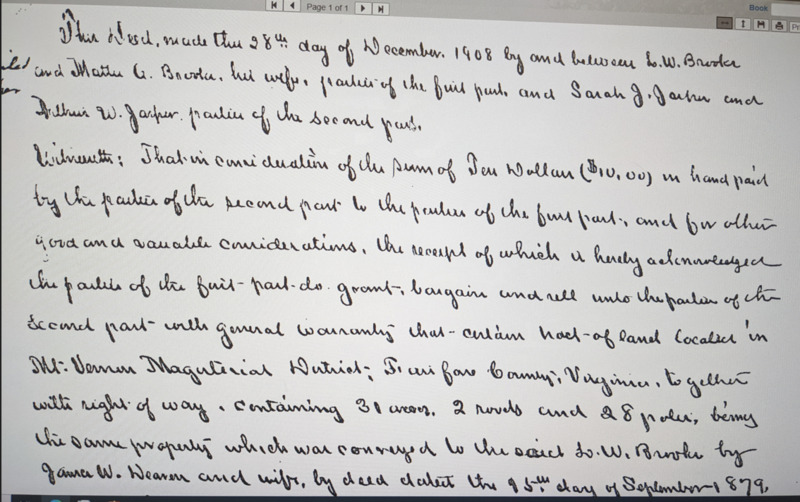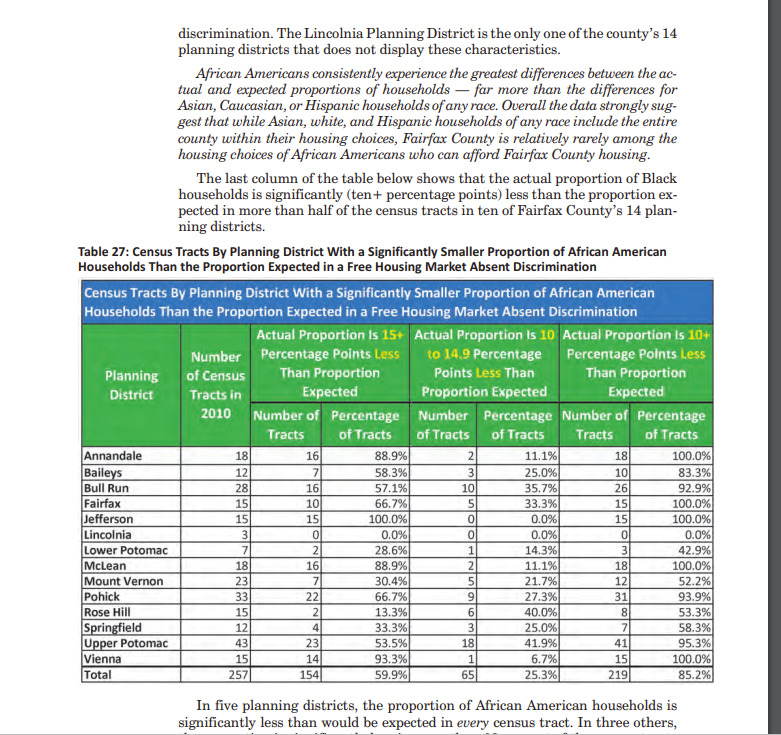Future Research and Conclusions
As mentioned in the previous pages, we have now uncovered a significant portion of the family of Lawson Brooks and general characteristics of his life. However, there is much to be said about his daily life. We have only uncovered a glimpse and the basics of the occupation, significance, and children & spouse. Additionally, through the help of the archivist, there are explanations to why Brooks had owned lands. This was because of his education and his literacy levels. As we begin to take a look at the book Fairfax County, Virginia: A History, the authors describe that “Freedmen in Vienna County probably had the widest range of economic opportunities in the county, although those able to acquire land remained a distinct minority. [1]” This will be explained later on below.
Citizen Brooks was undoubtedly an accredited individual, more so that he was a Black investor of lands and properties. Coming to the culmination of our topic, we have portrayed and described the biographical entry of Lawson Brooks. As stated in the text that the White Americans who purchased lands never “intended” to sell their house to people of color, it is very remarkable that Brooks had land and property during the time. Therefore, when James W. Deavers sold the property to Lawson, we can consider it a notable achievement for the Black community. Furthermore, the deed for the Southern Railway describes that Black people can now own other kinds of properties akin to the White Americans.
For future research regarding the epidemic of Black Americans, a research paper accounts the racial wealth gap between Black and White Americans with significant economic disparity. This study used census data, tax records, and Survey of Consumer Finances to depict the ratio of wealth gap [2]. This describes why more Black families cannot approach and invest in properties. The convergence was slower in the beginning until the 1980s where it widened again. Thus, demonstrating a cyclic turn of events of Blacks owning properties. Judging from the image represented above, we know that Brooks was an upstanding citizen who frequently paid taxes. By referring to the last documented tax, we can decipher the last year that Brooks owned his property was December 1908.We can assume that, especially for a Black individual, Brooks was fairly wealthy.
Comparing the statistics of the last century and the progress made, it would be easy to predict that te Black houseowners would come to fruition in Fairfax County. Especially that the quote from the above book stated that Vienna County probably had the widest range of economic opportunities in the county. [1]" Furthermore, we have stated that the Blacks were having more equal opportunites. Unfortunately, this however, as not the case, as an article that is established within the Fairfax county database displayed that Fairfax County is relatively rarely among the housing choices of African Americans who can afford Fairfax County housing. [3]" When researching about the proportion of Blacks, it was surprising to see how problematic the economy still really is for Black individuals. More so, Brooks was one Black individual who owned land in Fairfax, even when racial segregation was at an all-time high.
[1] Nan Netherton, Donald Sweig, Janice Artemel, Patricia Hickin & Patrick Reed. Fairfax County, Virginia: A History. (Virginia: American Newspaper Publishers Association, 1973), 451.
[2]Derenoncourt, Ellora, Chi Kim, Moritz Kuhn, and Moritz Schularick. 2022. “Wealth of Two Nations: The U.S. Racial Wealth Gap, 1860-2020∗.” https://gceps.princeton.edu/wp-content/uploads/2022/05/wp296_Derenoncourt-et-al.pdf.
[3]County of Fairfax. 2020. Fairfax County, Virginia Analysis of Impediments to Fair Housing Choice 2016-2020. (Illinois: Planning/Communications), 140. https://www.fairfaxcounty.gov/humanrights/sites/humanrights/files/migration/docs/ai-2016-2020.
Mohit Darla


